The NT Government's problem with things national
26 August 2018
The crowd at the National Road Transport Hall of Fame reunion (above) this weekend was down, and like the National Aboriginal Art Gallery we may lose it to a city in South Australia. Below: Hall CEO Liz Martin says the road transport icon is surviving on interstate volunteers while the multi million dollar home-made tourist attraction is still getting no slack from the NT Government.
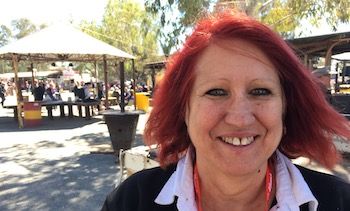
By ERWIN CHLANDA
If the NT Government – and the town, for that matter – deal with the National Indigenous Art Gallery the same way they have been with the National Road Transport Hall of Fame, then we can reliably expect a seamless transition from an incompetent and dishonest public consultation phase to a thoroughly chaotic management of construction and operation of the gallery.
And as Adelaide has made it clear it may beat Alice Springs to the punch with the art gallery, Broken Hill is now shaping up as a competitor for the transport hall.
With the Hall the town got a local treasure delivered on a platter, the result of decades of tireless and resourceful work by a small number staff (four at present but only two positions are filled), and a small army of volunteers, 100 of them currently.
Trouble is, only one of these volunteers now is a local, the others are from around the nation, looking after a unique attraction worth $15m in assets owned, turning over $1.7m a year in cash and lots more in kind, and displaying more than 300 trucks and machines “from rusty to immaculate”, in the words of CEO Liz Martin
Most exhibits are presently on permanent loan but owners can take them back any time – four in the past 12 months already have. These machines are icons bringing to life the story of a vast country dependent on road transport.
“Kenworth do want to stay, they are obviously a major part of our operation, and absolutely wish to stay in Alice Springs. I hope we can come to some sort of arrangement where we can all stay in Alice Springs,” says Ms Martin.
About the vehicles owned by the society she says: “I would hate to see our Territory road trains leave the Territory. I hope somebody will step up to the plate and look after the AEC and Kurt Johannsen’s road train. That’s all history. But at present unfortunately we don’t have anyone stepping up to the plate.
“We’re hoping not to downsize but we are still in negotiations. I met with corporate sponsors to take a more active role in the running of the place, including Shell, Kenworth, National Transport Insurance and Cummins.”
This week-end’s annual reunion and Shell Rimula Wall of Fame Induction Ceremony by the Hall for 70 “heroes” of the trucking industry brings into sharp focus the ongoing problems: Only 500 people have attended.
“Ordinarily it should have been 750 to 1000,” says Ms Martin.
Years of a bitter dispute with the NT Government was hoped to have been resolved in February when the parties “forged a way forward” – but not much has come of that.
“The real thing is to understand the uniqueness of our organisation. We don’t fit the mould anywhere,” says Ms Martin.
“To make the Hall the success it is we can’t ever fit ourselves into the moulds they want us to be in.”
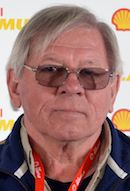
Shell Rimula Wall of Fame Icon Bob McMillan (at right) delivered produce from North Queensland to the southern states and served on multiple trucking boards and associations. Bob has also written for many trucking publications, working as a columnist for multiple magazines in his earlier years.
What are these moulds?
“Just to be under the Incorporations Act, to have members that are here, special general meetings, we just can’t get everybody here.
“This is the absurdity of it: We got told to have the AGM at our reunion. Our members voted against than. They are here to party and have fun. They don’t want to get tied up.
“And my volunteers are too buggered. Theyhave enough on their plate to get it all organised,” says Ms Martin.
“Half of them are not even our members until they get here.
“They come here to become enrolled in the Wall of Fame and as part of that we give them a complimentary membership, for which we invoice them in the following year. We have a 90% take-up.
“There are lots of other issues we’ve been trying to discuss with the [NT] Office of Business Affairs for many years.”
Non compliance is a “big issue” with the NT Bureaucracy.
“We can’t do a general meeting every month as we are expected to do because less than 1% of our membership lives in Alice Springs. The other 99% live interstate.
“We’re talking about grass roots truckies as well as corporates who can’t come up for a general meeting. Our board members are largely interstate.
“I think the [NT government’s] expectation was that we downsize and get a local committee and become a little tin pot museum like every other town in Australia has. We are bigger than that. And better than that.
“We’ve had offers literally from all over the country. Broken Hill stood out as a forerunner. We’re still going to do something in Broken Hill.
“They already have enough equipment down there without us having to take it away from here … [focussed on] mining, minerals and machinery.
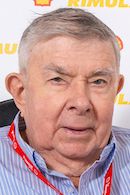 “We deliberately do not seek NT Government funding. We’ve always been funded by industry. We got into trouble because we wouldn’t take money because the money was conditional to us complying with parts of the Act we didn’t believe we could comply with,” says Ms Martin.
“We deliberately do not seek NT Government funding. We’ve always been funded by industry. We got into trouble because we wouldn’t take money because the money was conditional to us complying with parts of the Act we didn’t believe we could comply with,” says Ms Martin.
Shell Rimula Wall of Fame Icon Lex Gordon (at left) started his own business in the 1950s and employs over 100 staff. At 89 years young he is still overseeing operations and guiding the next generation.
“We prefer not to get government funding because we are in control of our own destiny.
“We did get some support from the NT Attorney General’s Department to help us transition from a Northern Territory organisation into a national one, which will make our compliance and our administration a little bit easier, but we’re still depending on people that we can’t get to make that happen.”
The good news for this weekend is that “all our sponsors stayed on board” for the event to be held in Alice Springs.
“We’ve lost a little bit of our membership because believe it or not, all our members down south were quite excited about us moving to Broken Hill and being closer to where they can come and help us.
“So when we decided to have another go here we did lose a few of our members” – but Ms Martin says she is confident to get them back.
If the government can’t come to terms with truckies, how can they expect to be working with hundreds of Aboriginal clans around the nation who will demand a say in the Indigenous gallery?
With those negotiations not even started yet, the Gunner government’s My Way or the Highway attitude toward its “preferred” ANZAC Oval location for art gallery has a foreboding precedent with the transport hall.
If accepting money from the NT Government is not an option, what can it do to help?
Says Ms Martin: “We advertised for a bookkeeper last week and got five applicants. One of the five knew what a spreadsheet was and she didn’t turn up for work on her first day. As it turned out she had to prove to Centrelink that she was applying for jobs around town.
“The biggest thing Museums and Art Galleries cut out years ago was funding for two staff, a curator or office manager,” says Ms Martin.
“They don’t do that any more. It’s the human resource side of it, that’s where we struggle.
“People see it as a major job because we are a major tourist attraction. We turn over a lot of money and a lot of volunteers. We just can’t get the people to put the hours in on the committee.
“We even bring our volunteers in from interstate because we can’t draw on Alice Springs. There is no way Alice Springs would sustain us.”
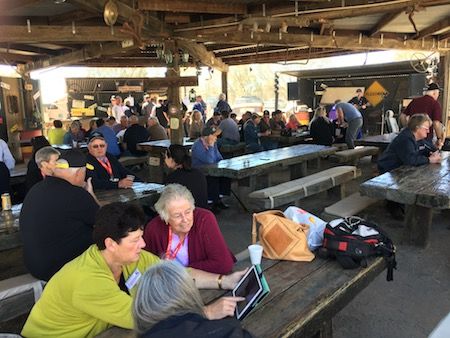 The management board members, ranging from trucking pioneers to top-level executives of large companies, are – logically – also spread throughout the nation, as no doubt would be case with the art gallery.
The management board members, ranging from trucking pioneers to top-level executives of large companies, are – logically – also spread throughout the nation, as no doubt would be case with the art gallery.
Lunch yesterday in the Stuart’s Bush Kitchen at the Transport Hall complex – entirely run by volunteers, all but one of them from interstate.
“Most of our volunteers are retired truckies. We’ve got many of these old guys but 90% of them are unskilled. Most of them wouldn’t know what a spreadsheet it is, or OH&S.
“I had one old bloke over in the workshop and I told him he had to put his work boots on.
“He said, I’ve never worn work boots all my life and I’ve only lost two toes.”



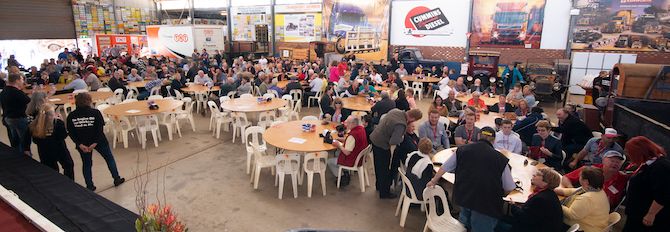
It is unfortunate that the transport museum has come to this.
As a former Alice resident who worked the CATA and AAT coaches for 20 years may I say it will be a monstrous and disasterous step backwards if you think things will be any better in Broken Hill.
I was born in that town and still have relatives and close friends in the town and follow what is happening in the town.
The council is in a mess, the town is full of vandalism and drugs are rife throughout the town.
The mining heydays are finished and the town is dying.
You need to find somewhere else which is still vibrant.
I don’t like referring to the town like this but please be warned. Broken Hill is not what it used to be.
Its populatiion has shrunk from 35,000 to 19,000 and although the town looks big, half the houses are empty or have been demolished with empty blocks all over the town.
I wish the town well with its art galleries and minerals, but it is not the place to put a transport museum.
It is tycipital of government and people in so called power not being able to see what is in front of their nose.
A terrific money spinner and icon of the Central Australia transport, being wrecked by government infighting.
Why not invest in something already here and working and bringing in the tourist as well as the money into the Centre, instead of investing millions into a gallery that we already have two of and can be added to if the government so wished to negotiate.